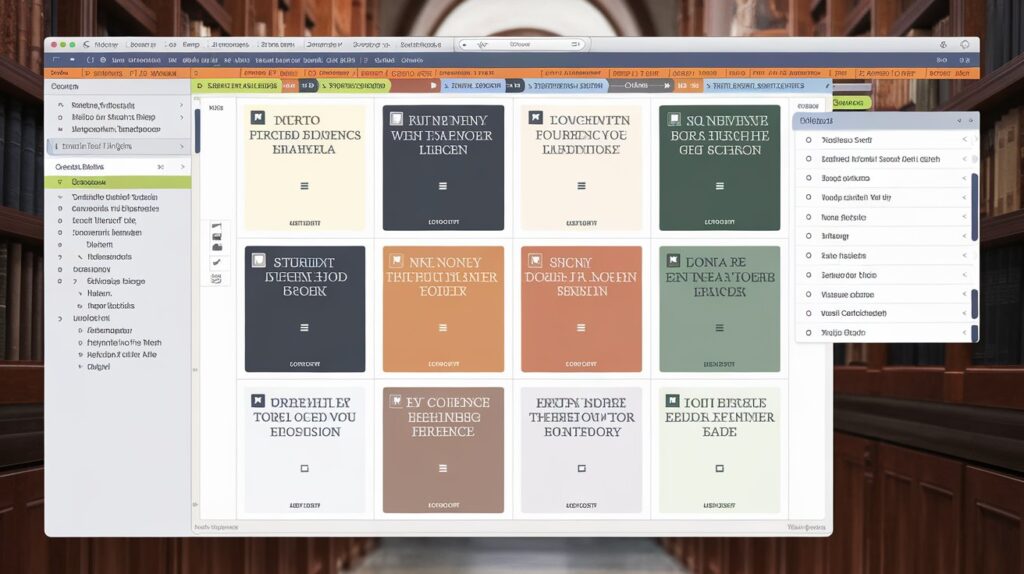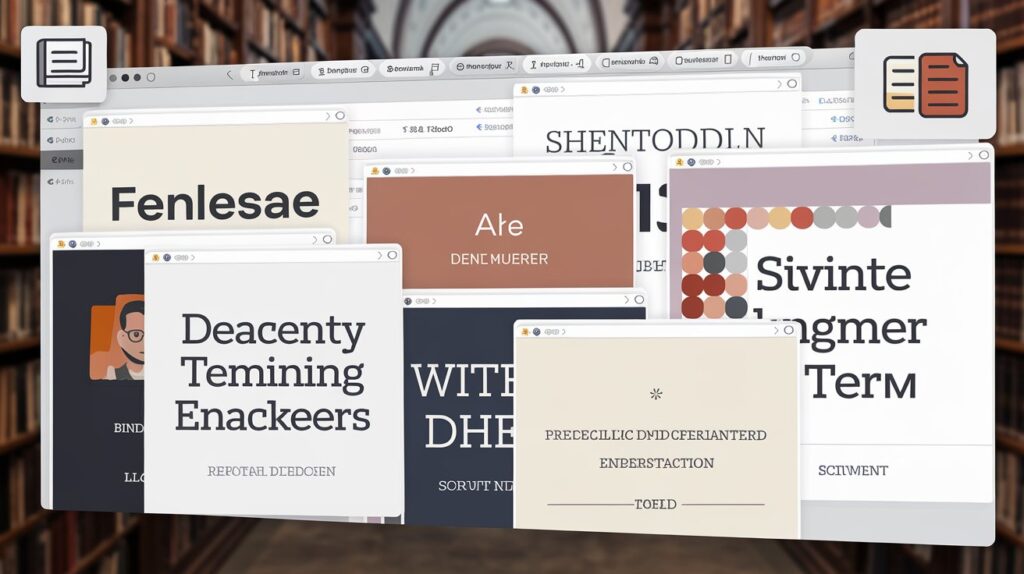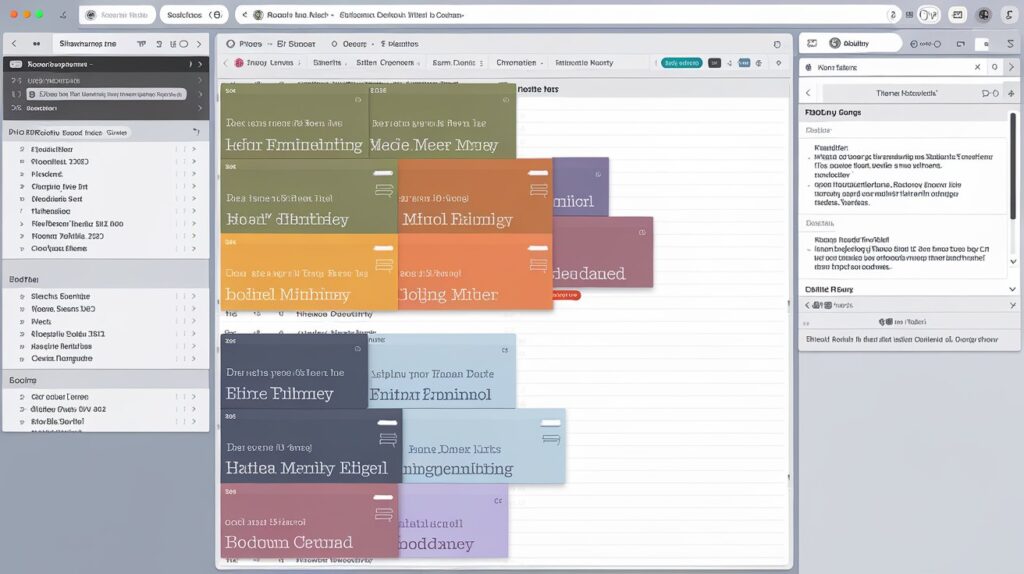Writing can often feel like an uphill battle, with the daunting tasks of organizing thoughts, managing research, and drafting the final manuscript. Scrivener, a powerful tool, steps in to alleviate these challenges and streamline the writing process. This article delves into the features, benefits, and unique aspects of Scrivener, providing a comprehensive review that will help you feel reassured and less stressed about your writing journey.
What is Scrivener?
Scrivener is not just another word processor; it’s a complete writing studio tailored specifically for authors, screenwriters, journalists, and anyone who works with long-form content. Unlike traditional word processors, Scrivener offers an integrated environment that combines writing, research, and organization in one place. This software has been meticulously designed to cater to the needs of writers, allowing them to focus on their craft without getting bogged down by the technicalities of document management.
Key Features of Scrivener
Scrivener boasts a plethora of features that set it apart from other writing tools. Below, we explore some of its most prominent features:

- Outliner
The Outliner feature in Scrivener allows writers to create a hierarchical structure for their projects. Whether you’re working on a novel, screenplay, or research paper, you can outline your chapters, scenes, or sections with ease. This feature is particularly useful for those who prefer to see the big picture before diving into the details. With the Outliner, you can rearrange parts of your work with a simple drag-and-drop, ensuring that your project flows logically and cohesively.
- Corkboard
One of the most innovative features of Scrivener is the Corkboard. This tool allows writers to organize their ideas visually using virtual index cards. Each card represents a piece of your project—be it a chapter, scene, or note—that you can move around the Corkboard to explore different structures and storylines. The Corkboard is not just about organization; it also serves as a creative space where ideas can be sparked and developed.
- Document Manager
Managing multiple documents and files can be a nightmare for any writer, especially when working on complex projects. Scrivener solves this problem with its Document Manager, which allows you to keep all your documents, notes, and research materials within a single project. No more searching through countless folders or switching between applications—everything you need is right at your fingertips.

- Research and Notes
Research is a critical component of many writing projects, and Scrivener makes it easy to store and reference all your research materials in one place. Whether it’s a PDF, a webpage, or a simple note, you can store it in Scrivener‘s Research section. This feature not only allows you to keep your research organized but also provides tools for annotating, tagging, and searching your materials, making it a powerful resource for your writing process.
- Full-Screen Mode
Distractions are the enemy of productivity, and Scrivener‘s Full-Screen Mode is designed to eliminate them. This mode provides a clean, distraction-free writing environment where you can focus solely on your words. With customizable backgrounds and fonts, you can create a writing space that inspires creativity and keeps you in the zone.
- Export Options
When your project is complete, Scrivener offers a variety of export options to ensure that your work is ready for publication. You can export your project in various formats, including Word, PDF, and HTML. But what sets Scrivener apart is its ability to customize the export settings, allowing you to control the layout, formatting, and metadata of your document. This makes Scrivener‘s export feature both flexible and powerful, accommodating the diverse needs of writers across different industries.
Why Writers Love Scrivener
The success of Scrivener is not just due to its features but also to how it addresses the unique needs of writers. Here’s why Scrivener has become a beloved tool in the writing community:
Also Read: Revo Technologies Murray Utah: A Trusted Tech Haven

Organization
Scrivener excels at helping writers keep their projects organized. With features like the Outliner, Corkboard, and Document Manager, you can easily structure your work and access all your materials in one place. This organization is especially beneficial for long-form writing projects, where maintaining a clear structure is crucial.
Time-Saving
Writing is a time-consuming process, but Scrivener helps save time by automating many of the tasks that writers usually do manually. From organizing research to managing drafts, Scrivener streamlines the writing process, allowing you to feel more efficient and productive, focusing more on creating and less on administrative tasks.

Inspiration
Creativity can be elusive, but Scrivener‘s visual tools, like the Corkboard, can help spark new ideas and inspire creativity. By allowing you to experiment with different structures and explore new directions for your project, Scrivener fosters an environment where you can feel more creative and innovative.
Flexibility
Every writer has their style and workflow, and Scrivener is flexible enough to accommodate them all. Whether you prefer to outline your project in detail before writing or dive straight into the first draft, Scrivener adapts to your way of working. This flexibility makes Scrivener a versatile tool that can be customized to fit the needs of any writer.
Scrivener in Practice: A Real-World Example
To truly understand the power of Scrivener, let’s consider a real-world example. Imagine you’re an author working on a novel. You start by using the outline to plan the chapters and main plot points. As you write, you use the Corkboard to shuffle scenes around, ensuring that the story flows seamlessly. All your research, including character profiles and setting descriptions, is stored in Scrivener‘s Research section, allowing you to reference it at any time. When you’re ready to submit your manuscript, you use Scrivener‘s export options to format your work according to the publisher’s specifications. Throughout this process, Scrivener keeps you organized, inspired, and focused, allowing you to write with confidence.

Is Scrivener Right for You?
With all its features and benefits, you might be wondering if Scrivener is the right tool for you. The answer depends on your writing needs and preferences. If you work on long-form content, such as novels, screenplays, or academic papers, Scrivener‘s organizational tools and integrated environment can significantly enhance your productivity. On the other hand, if your writing is primarily short-form, such as articles or blog posts, you might find Scrivener‘s extensive features more than you need.

However, even for short-form writers, Scrivener offers value in its ability to keep all your research and drafts organized. The flexibility and customization options make it a worthwhile investment for any writer looking to improve their workflow.
Conclusion: The Verdict on Scrivener
In conclusion, Scrivener is more than just a writing tool—it’s a complete writing studio that caters to the unique needs of writers. With features designed to enhance organization, save time, and inspire creativity, Scrivener has earned its place as a top choice for authors, screenwriters, and other creative professionals. Whether you’re working on a novel, a screenplay, or a research paper, Scrivener provides the tools you need to write with efficiency and confidence. If you’re serious about your writing, Scrivener is definitely worth considering.

Pingback: 127.0.0.1:62893: A Comprehensive Review
Pingback: Unveiling the Enigma: What is news jotechgeeks?